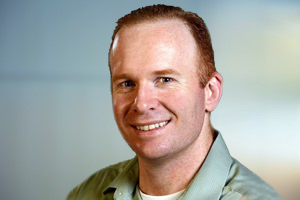Dr. Zimmerman: When do you see this being available to physicians?
Dr. Challen: As I mentioned, we're all acquiring cancer-causing mutations in our bone marrow as we age, but the vast majority of people are going to be just fine. It’s in the very rare fraction of individuals who progress from mutations to leukemia. So, two key developments are critical to our making preventative therapies a reality. First, we need to develop a greater understanding of the specific genes in the particular variants that are involved in developing blood cancer, and second, we need to understand the environmental factors and family histories that might separate an individual from the 99.9% of us where mutations don't matter.
These studies are happening now. We are looking at a retrospective analysis of epidemiological cohorts in patients whose samples have been banked for a number of years – even decades. We are determining which of those patients developed blood cancer. We can then backtrack and analyze what might have happened for each cancer patient that resulted in that person developing leukemia, for example. We can use that information to answer questions about which patients within the general population may be more at risk of developing blood cancers.
A number of researchers are looking for answers to these questions. Scandinavian countries have done a great job of cataloging large cohorts of individuals whom they follow over time. Large databases offering patient information are coming online now, like the UK Biobank. I feel that over the next five to 10 years, this part of our knowledge base will be more complete. We will have surveyed enough people across the globe in the general population to say with a fair degree of accuracy that this person will have say a 90% chance of developing leukemia over the next five years based on his or her mutational history.
What should we do to address the risk? That is really where the laboratory-based studies help us because we use the molecular tools developed in the lab to understand how these mutations change the fundamental properties of the stem cells and lead us to a way that we can target them.
So in our lab, we use a combination of cell lines from mice that we genetically engineered to carry the human mutations and primary human patient samples to run a lot of different screens and diagnostic tests. We can use these to run multiple different screens and diagnostic tests to try and figure out what sensitivities these mutations might carry for the cells that are not also carried by the normal cells in our bone marrow. The goal is to identify non-cytotoxic therapies that we could use to treat people by weeding out their mutant stem cells and reducing their lifetime risk of developing leukemia.














